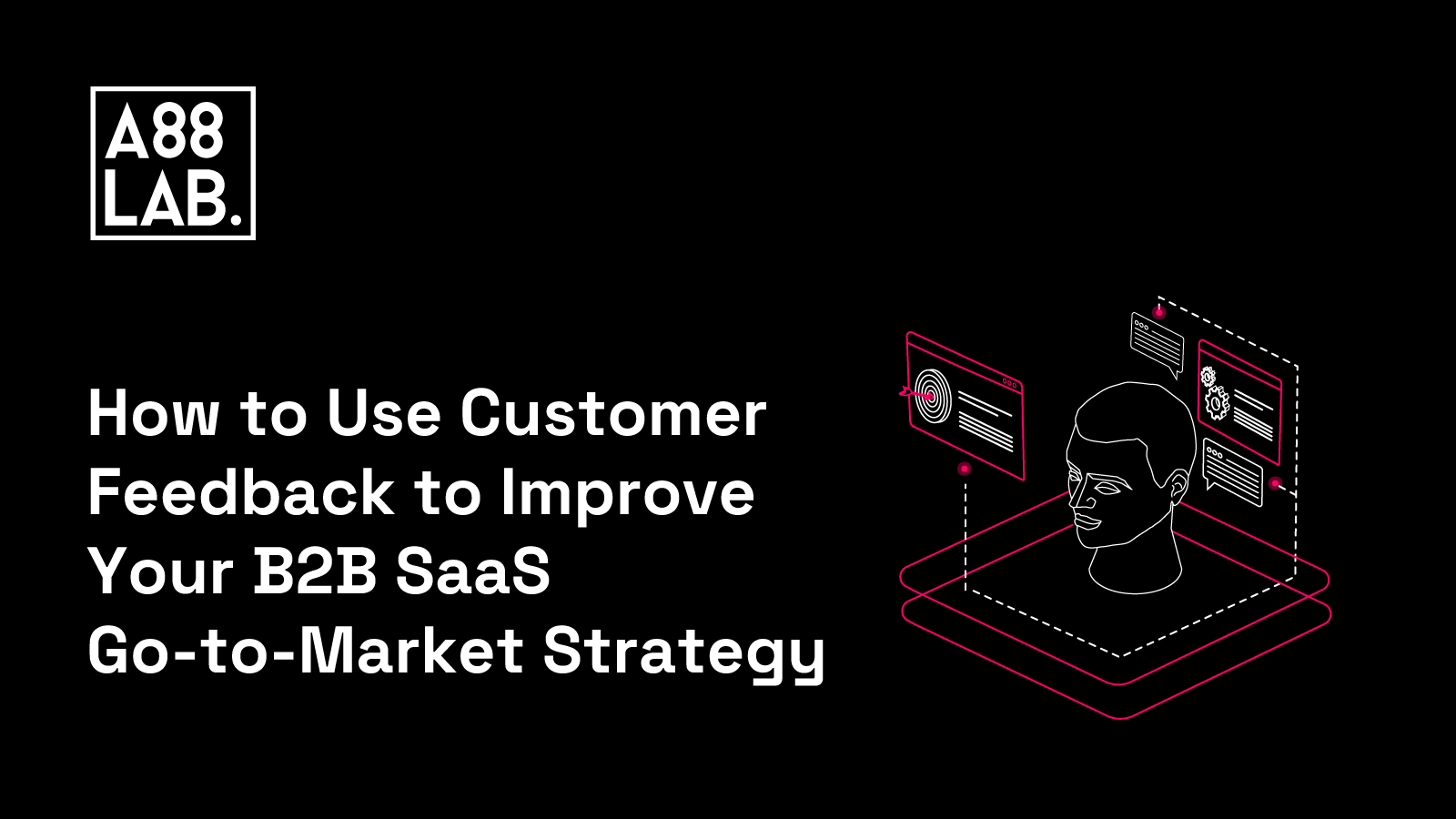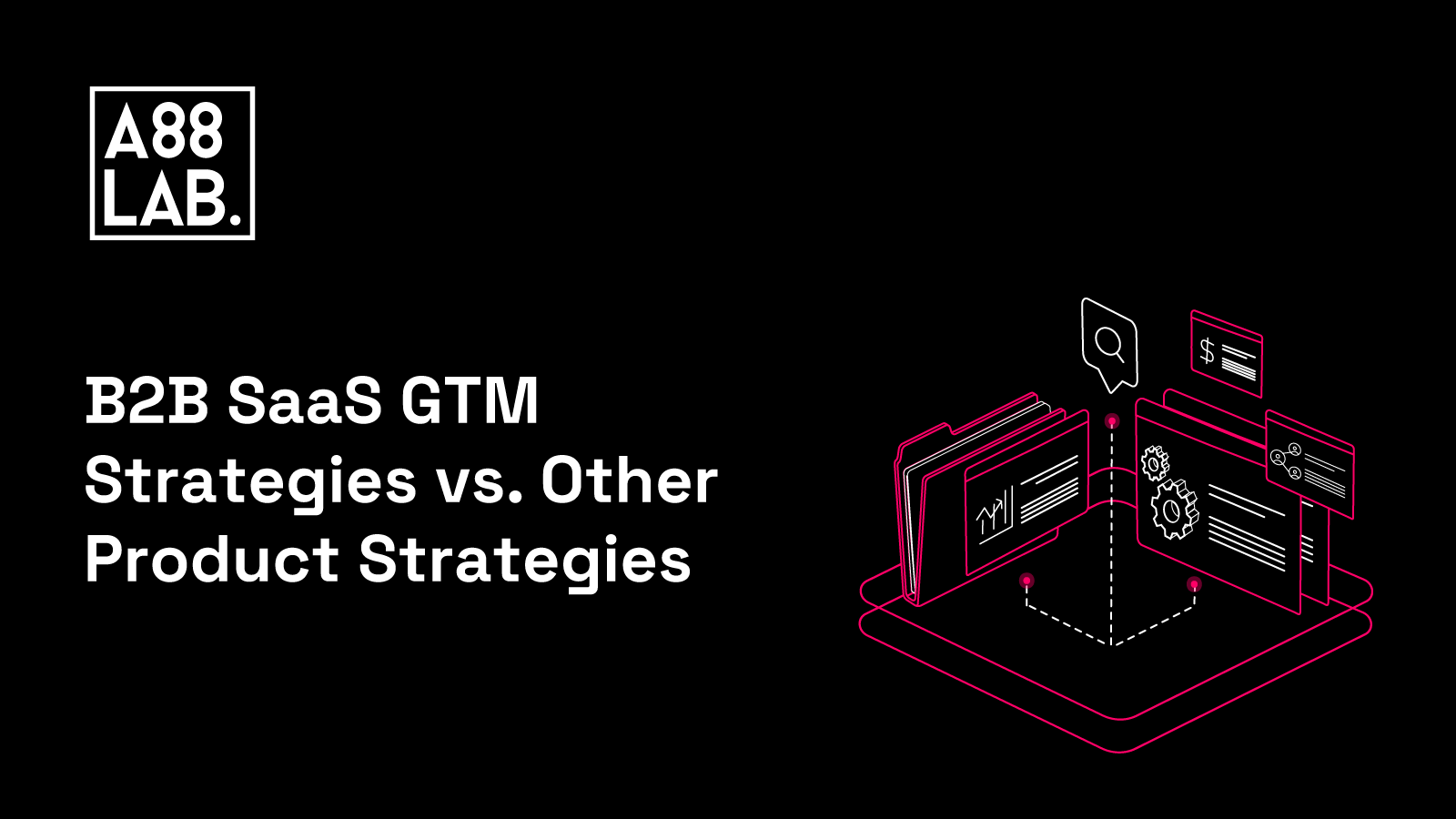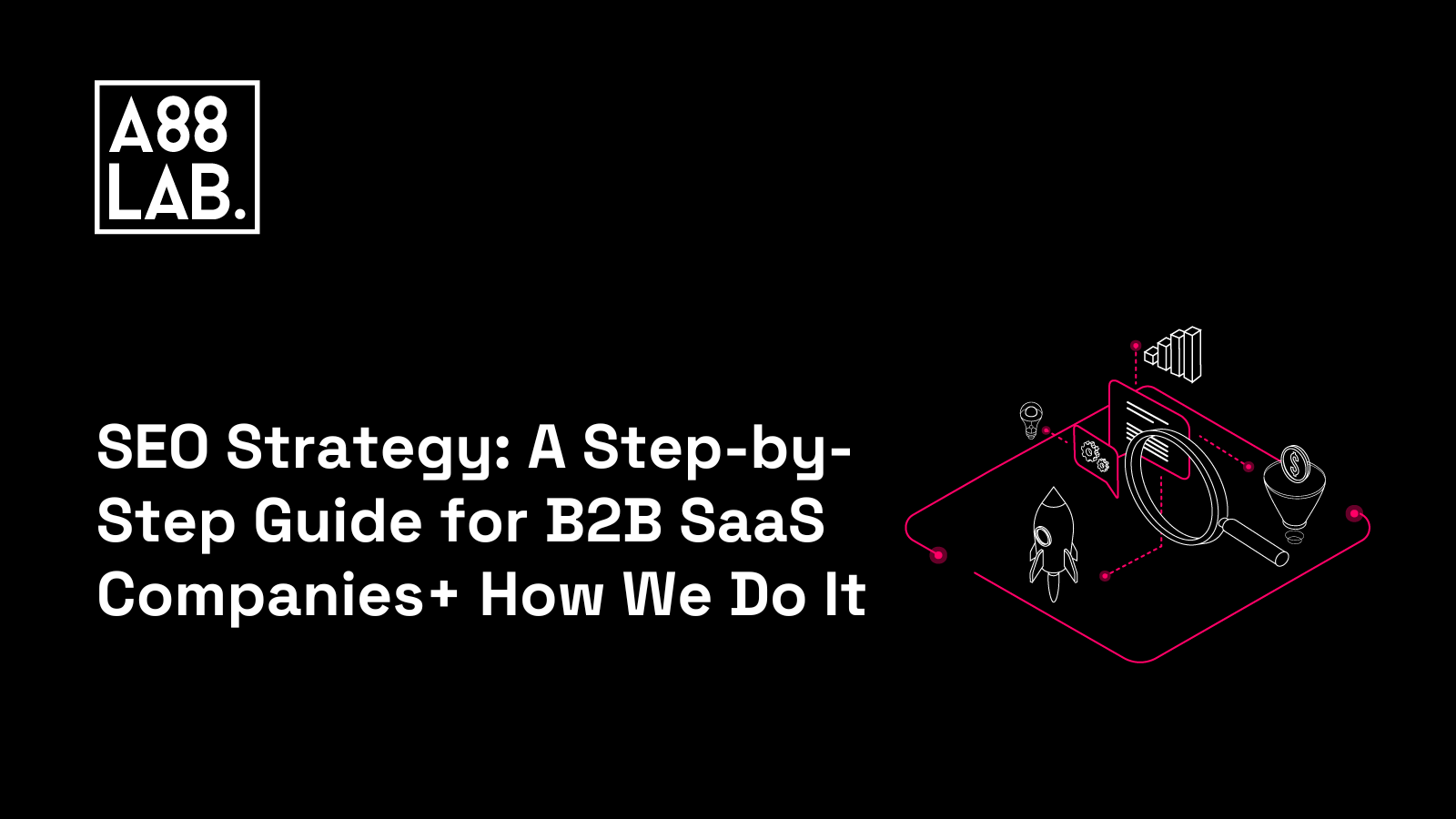Every SaaS founder learns (sooner or later) that their GTM strategy needs to focus on more than just the product. While their focus is often on launch times, technical updates, or pricing, they often forget that the customer experience and support they provide along is the one thing that can make or break their business.
While you may not have customer data the first time you start building your GTM strategy, you need to start improving it once you receive the first wave of customer feedback. Having this customer-centric approach when building your strategy is how you secure long-term success.
But how do you include things like "customer support," "customer experience," or "customer satisfaction" into a plan like a go-to-market strategy? That’s what we’ll cover in this blog post.
Let’s get started:
Why Customer Feedback Matters in GTM Strategy
Delite, Ink, Team Voice- what did all they have in common? Basically, they failed, and spent a lot of money while doing so. Even though their original idea sounded groundbreaking to them, they never took customer feedback into consideration, which ended up costing them their business.
What would've happened differently if they had decided to gather information from real users and use it to test the validity of their ideas instead? Maybe some of them would fail anyway, but most of them would likely either adapt to user demands, adjust their product market fit, or simply give up if they realized there is no demand for their ideas
Gathering insights from real users allows you to test the validity of your initiatives and theories. It provides perspectives that confirm or question your assumptions, therefore reducing the risk of investing time and resources into unsuccessful projects.
Here are a few ways in which customer feedback makes a significant impact on your GTM strategy:
1. Helps With the Product-Market Fit
If you look at most of the SaaS startups that fail, their reasons for failure look quite similar. They couldn’t prove their product solves specific pain points, customers didn’t see the value of it, or they simply weren't willing to pay for it. So, it goes without saying that a successful GTM strategy is one that starts with a good product-market fit.
This is why, before you jump into the product development process, you need to invest time and money in your customer research. You need to have an in-depth understanding of their pain points, needs, and preferences and see how your product can help them.
To know if you are heading in the right direction, here are a few questions you can ask yourself when doing your product-market research:
.png?width=1600&height=900&name=Blog%20post%20Image%20June%20(1).png)
No matter how much research you do, the final product-market fit test will happen once the product is launched. This is where you take some time to run customer surveys, conduct interviews, collect reviews, and apply social listening. All of these tactics are helpful for collecting customer feedback, which can later be applied to your GTM strategy.
Don’t forget the 40% rule here as well. The 40% rule is a metric that tracks how successful your product-market fit is. Basically, if 40% percent of the surveyed customers indicate that they would be "very disappointed" if they no longer have access to your product or service, it means you are heading in the right direction.
2. Improves Pricing Strategy
Price is more than just a number you put on your product. If you set it too high, your product will probably collect dust. On the other hand, if you set it too low your profit is the one that takes a hit.
Taking into account the customer’s perceived value of your product or service based on the customer feedback you previously collected and implementing it into your strategy is a great way to find a sweet spot.
Another important aspect you can’t forget is the pricing sensitivity. Price sensitivity shows you the degree to which the price of a product affects your customers' purchasing decisions. Knowing this will help you to adjust your pricing in a way that aligns with customer preferences and purchasing behavior.
Finally, properly generating user feedback will tell you what features or aspects they would be willing to pay more for. This insight can guide you in your product development and pricing decisions, helping you to maximize revenue while meeting customer expectations.
3. Sharpens Your Messaging
What is your key message? Do you even have one? Do your customers know what it is? Unless you know exactly what pieces of information you want your audience to hear, understand, and remember, it's time to fine-tune your messaging.
So, the next time you start crafting your messaging start with thinking about how customers see your products and what language resonates with them and what doesn’t.
Take Pipedrive’s product messaging as an example. In the headline of their product messaging, they highlight how successful their users have been with their product (selling 28% more)

4. Optimizes Your Sales Strategies
The end goal of your GTM strategy is to sell the product. The problem here is that your sales team rarely gets the same kind of same kind of feedback that your customer support does. They migh get great questions from prospects that can turn into good feedback to the product team or help narrow down the Ideal Customer Profile. But unless there is a direct line of communication with the other departments, chances are, your sales team won't be able to get the full customer feedback experience.
This can easily turn into a problem, considering they're the ones selling your product. The feedback helps them spot any issues within the selling process, highlight areas for improvement, enable personalized approaches to meet customer needs, and ultimately increase conversion rates.
Apart from the cross-collaboration, you can also start thinking about including specialized sales training programs that focus on skills such as active listening, empathy, and problem-solving. You want your sales team to be properly skilled so they understand and know how to respond to customer needs, resulting in a more personalized and effective sales approach.
5. Keeps Your Customers Happy
Which metrics do you keep an eye on to make sure your customers are happy, and your GTM strategy is working? If your answer to this question is none, consider adding Net Promoter Score and Customer Satisfaction Score to the (probably infinite) list of metrics to follow. They will help you understand the overall performance of your GTM strategy.
The Net Promoter Score is a metric used to assess customer loyalty, satisfaction, and enthusiasm towards your company. It is calculated by asking customers one question: "On a scale from 0 to 10, how likely are you to recommend this product/company to a friend or colleague?" NPS scores will help determine if there are any improvements you need to make in your service, customer support, or delivery to boost customer loyalty.
On the other hand, customer satisfaction score indicates how satisfied customers are with your products or services. It's measured through customer feedback and expressed as a percentage (100% would be fantastic – 0% would be terrible).
Gathering customer feedback helps you understand the underlying reason behind the NPS and CSAT scores. It gives you an overview of what aspects of the customer experience are contributing to their satisfaction or dissatisfaction. By acting on customer feedback, you can make targeted improvements to address pain points, enhance customer sentiment, and ultimately increase customer satisfaction and loyalty, which will all result in a better GTM strategy.
6. Builds Trust and Loyalty
Apart from the strictly business benefits collecting customer feedback brings, here is another one we have to add to this list: It makes you look good.
People love brands that take time to go over their comments on social media reviews, ask for feedback, and then work on making their product better with it.
This approach establishes trust and loyalty and builds meaningful relationships with your customers. By consistently seeking feedback and responding to it, you can continuously refine your products, services, and interactions, setting the stage for sustained success and growth.
7. Enables Learning and Innovation
Even if you surround yourself with the most creative team possible, there is still a chance you will get stuck in an echo chamber after some time. This often happens when people are deeply involved in the same project for a long time, creating a closed-off environment where new ideas struggle to come up.
Working really closely on a project can lead to groupthink, where people stick to a dominant viewpoint and are hesitant to challenge each other’s ideas. This can block creativity and innovation.
A good feedback loop creates a culture of always learning and coming up with new ideas. This ongoing process of feedback and adaptation helps the organization to stay agile and maintain a competitive edge.
By weaving customer feedback into your GTM strategy, you'll create a dynamic, responsive approach that not only meets customer expectations but also guarantees success.
Top 3 Ways to Gather Customer Feedback
Now that we've covered all the benefits your SaaS can get from customer feedback let's talk about how to actually gather it.
1. Frontstage Feedback
Frontstage feedback means direct conversation with customers. Whether that direct conversation involves face-to-face interviews, organizing focus groups, or seeding emails with surveys, make sure you're asking open-ended questions and actively listening to their responses.
The focus should be on understanding the factors that drive their purchase decisions, identifying both positive and negative interactions, and uncovering reasons they might consider switching to a competitor. Avoid using "why" questions, as they can come across as confrontational.. Document every piece of feedback, as each insight is valuable for improving your go-to-market strategy.
2. Backstage Feedback
Backstage feedback, on the other hand, means understanding the internal processes that can impact customer experiences. To gather it, you have to look at the behind-the-scenes operations that are most commonly involved in customer complaints or compliments.
For instance, if a customer mentions that it takes three weeks to open a new account, you need to explore the internal systems and workflows causing this delay. Engaging with IT teams and other internal stakeholders can reveal connected systems and manual processes that need optimization. Documenting these backend complexities highlights areas for systemic improvement and helps in simplifying your processes which will enhance the overall customer experience.
3. Sentiment Analysis
Feedback doesn't always have to be about the features of your product it can be emotional, too. Sentiment analysis focuses on understanding the emotional responses of customers at various stages of their journey. This can be done subjectively during customer interviews or by using AI tools to analyze historical customer relationship management (CRM) data.
For example, machine learning models can predict customer sentiment based on past interactions. Plotting emotional responses, such as happy or unhappy faces, along a customer journey map can help identify specific pain points.
Implementing the A.C.A.F Customer Feedback Loop in Your GTM Strategy
Have you ever heard of the A.C.A.F customer feedback loop? If not, let me quickly introduce it to you. It’s a method that helps you gather customer opinions, categorize them, and then act on them. The goal is, of course, to make positive changes in your company's performance.
Integrating the ACAF feedback loop into your GTM strategy will help you provide a structured approach to managing customer feedback, and it will make sure your B2B SaaS business stays competitive over time.
The ACAF loop, which stands for Ask, Categorize, Act, and Follow-Up, ensures that feedback is not only collected but also used to drive meaningful improvements. Here’s how to implement this method:
Step 1 – Ask for Customer Feedback
Before you go and ask your customer for their feedback, tailor your questions to gather the information you need. Some of those questions could be:
-
How satisfied are you with our SaaS product?
-
What improvements would you recommend for our SaaS product?
-
How likely are you to recommend our SaaS product to others?
-
How easy to use do you find our product?
-
Is there enough available supportive documentation about our product?
-
What new feature would you like to add to the product roadmap if you were our product lead?
-
How satisfied are you with our customer support?
-
How satisfied are you with the pricing, considering the value our product offers?
-
How satisfied are you with the sales process?
-
What improvements would you bring?
If you are using surveys, make sure they are short, ideally taking no more than three minutes to complete, because no matter how loyal of a customer they are, noone wants to fill in a 30-minute survey. Additionally, consider targeting specific customer segments to avoid survey fatigue.
Step 2 – Categorize the Feedback
You did the work, you asked the questions, and you gathered the feedback. Now, it's time to categorize it. Do this into three main groups:
1. Positive Feedback: This type of feedback will help you improve your SaaS product overall. It may include suggestions for new features or improvements to existing ones, as well as acknowledgments for the value your product provides.
2. Negative Feedback: Though not immediately actionable, this feedback can be instrumental for future enhancements once you gain a better understanding of user needs. It might include complaints about the product, requests for changes, and suggestions for improvement.
3. Neutral Feedback: This category includes feedback that may not directly influence product decisions. It could consist of generic compliments or non-specific complaints that do not offer actionable points. Additionally, it can involve feedback from individuals who fall outside of your target user base or lack experience with your SaaS product.
Step 3 – Act on the Feedback
The next step is to take action based on the feedback you receive from your customers. Failure to do so will make the time and effort spent collecting feedback pointless. The most effective approach is to establish a feedback collection system that allows people to submit their feedback via email or a feedback portal on your website, enabling regular review by the person responsible for making changes based on customer input.
Analyzing and acting on customer feedback involves several techniques, such as categorizing feedback into themes or topics, creating customer satisfaction scores or Net Promoter Scores (NPS), and comparing feedback data with previous periods or benchmarks. For instance, if many customers are complaining about a specific feature of your product or service, it might be time to remove that feature altogether or redesign it completely.
Step 4 – Follow-Up with Customers
The final step in the ACAF loop is to follow up with customers who provided feedback. Engage with them and inform them about the actions you plan to take based on their suggestions. This can be done by sending thank-you notes, newsletters, or personal emails. This follow-up builds trust and loyalty and encourages ongoing customer engagement. Even if certain feedback cannot be implemented, explaining the reasons to customers can create a sense of transparency and respect.
Conclusion
In conclusion, integrating customer feedback into your go-to-market strategy is essential for the success of any product or service launch. By actively seeking, analyzing, and implementing it, you can improve your product offerings, improve your messaging, and establish stronger connections with your customers. This iterative process of learning and improvement results in increased customer satisfaction, brand loyalty, and, ultimately, successful market entry. So, treat feedback as a valuable asset and use it to drive revenue and market growth.
.png)


